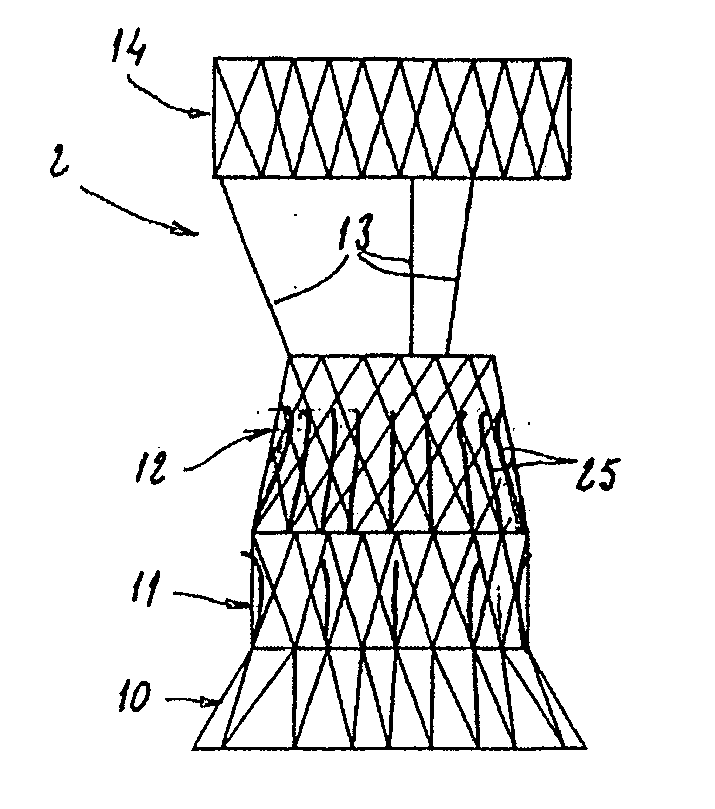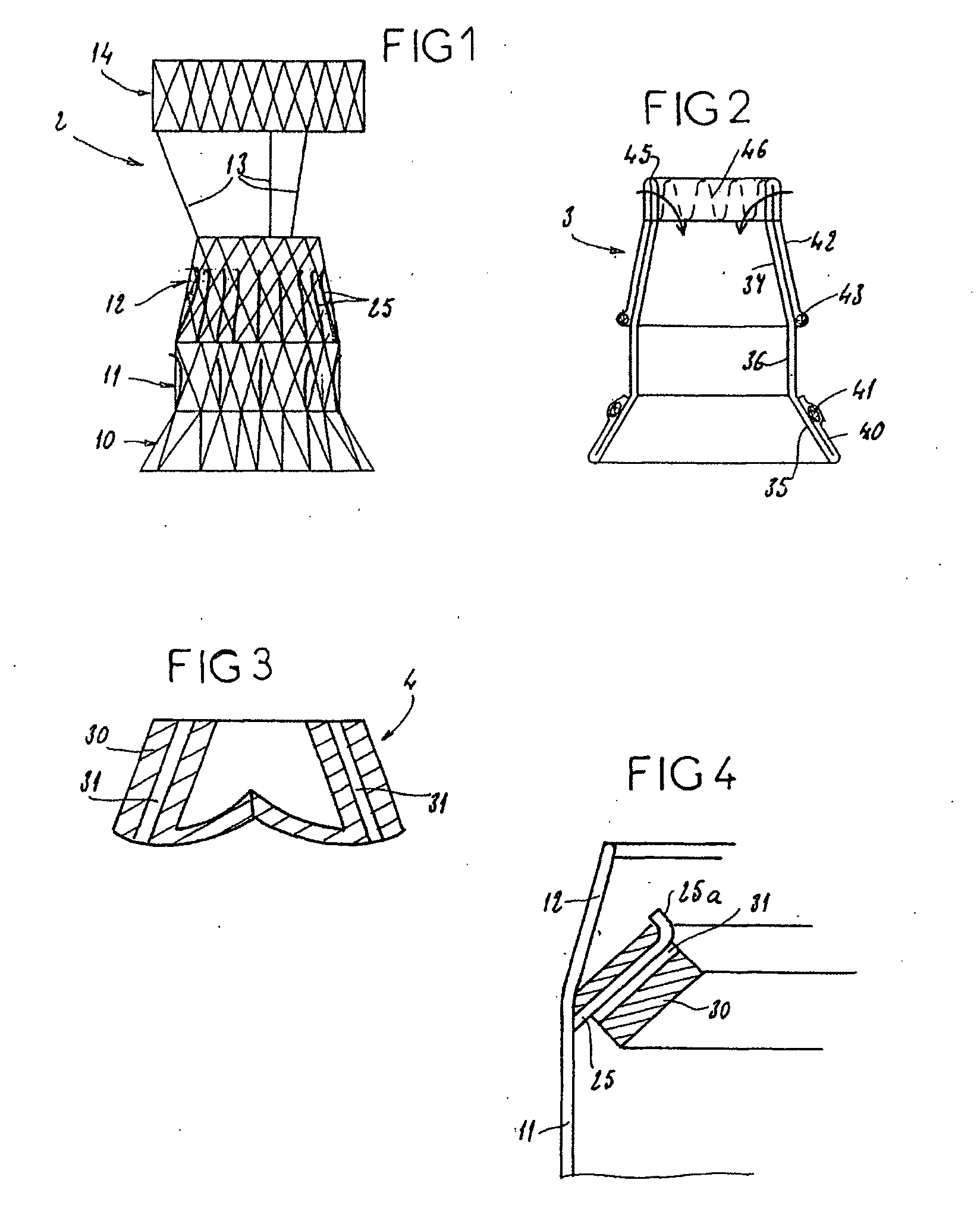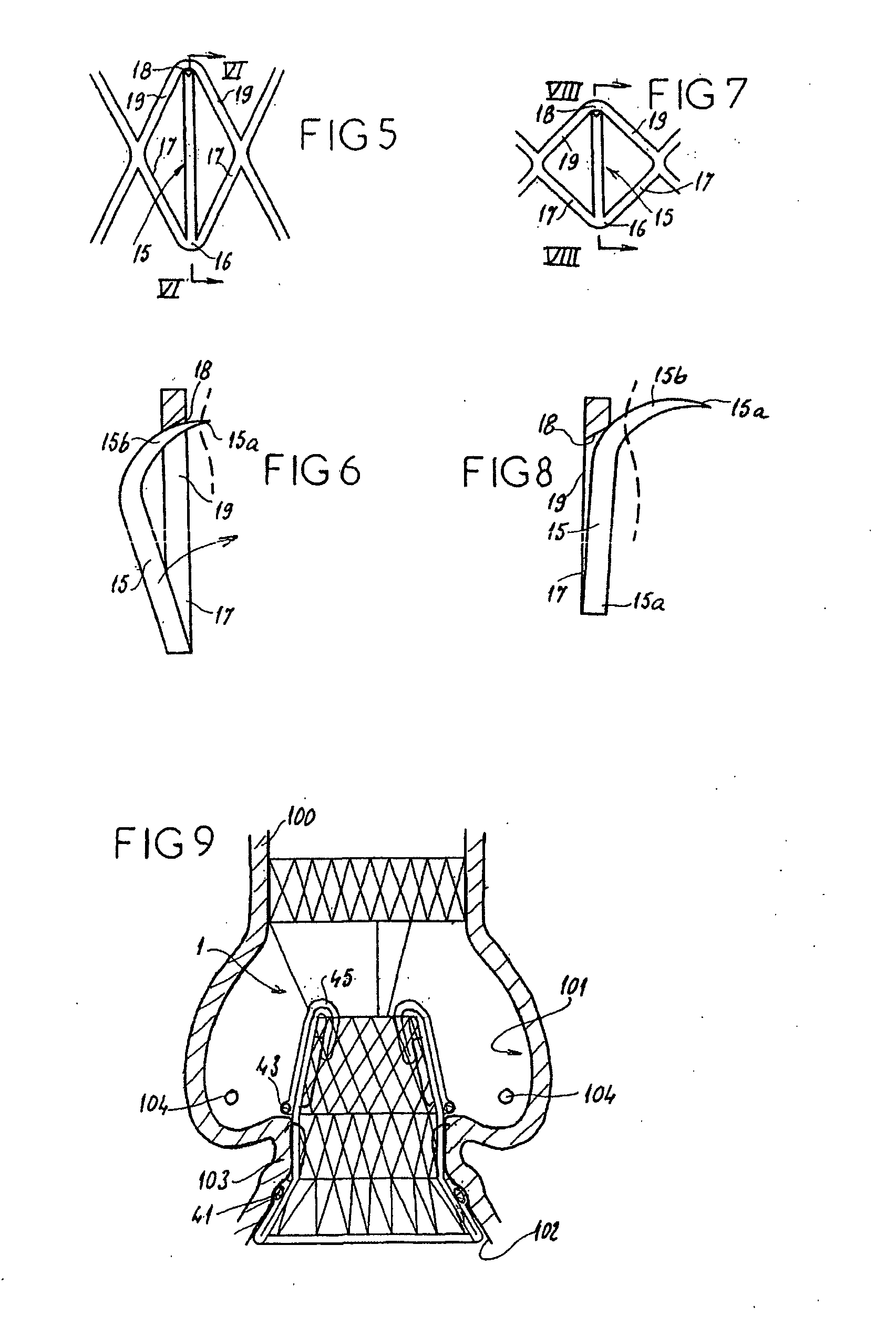Kit enabling a prosthetic valve to be placed in a body enabling a prosthetic valve to be put into place in a duct in the body
a prosthetic valve and kit technology, applied in the field of aortic valves, can solve the problems of reducing the leakage of the stent in the area, reducing the expansion force of the stent, and reducing the leakage of the stent, so as to reduce the risk of valve damag
- Summary
- Abstract
- Description
- Claims
- Application Information
AI Technical Summary
Benefits of technology
Problems solved by technology
Method used
Image
Examples
second embodiment
[0065] In the assembly 1, the valve 4 is not mounted in advance inside the stent 2 but is placed in it once the stent 2 has been expanded. As is shown in FIG. 10, the sheath 3 then has internal tubes 50 formed in such a way as to protrude inside the stent 2 once this sheath 3 is engaged on the stent 2. These tubes 50 can in particular be sewn or fixed by any other means to the sheath 3 after the latter has ben placed on the stent 2.
[0066] Referring to FIG. 11, it will be seen that the peripheral wall 30 of the valve 4 has, in place of the tunnels 31, a series of pin-shaped clips 51. Each clip 51 has an inner arm 52 engaged longitudinally in the wall 30, and a rectilinear outer arm 53 extending along the outer face of the wall 30. The arms 53 terminate in curved ends and are connected to wires 55 engaged and able to slide in the tubes 50.
[0067] As is shown in FIG. 10, a catheter 80 is used to bring the valve 4 into position in the sheath 3. The valve 4 is engaged with sliding on the...
third embodiment
[0068] In the assembly 1 shown in FIG. 13, the stent 2 forms a median cage delimited by a ring 60 and by longitudinal wires 61, in which cage the valve 4 is tightly inserted. As is shown in FIG. 14, the valve 4 has a lateral wall 30 of tubular shape in which three lateral openings 65 are formed. These openings 65 are positioned opposite the coronary ostia 101 and permit a natural flow of blood, without risk of stagnation in the area of these coronary ostia 101.
[0069] The invention provides an assembly 1 for placing a valve 4 in a body duct 100, said assembly having the following advantages over similar assemblies in the prior art: elimination of the risk of damage to the valve 4 by the balloon or balloons used to expand the stent 2; possibility of applying a considerable force of expansion to the stent 2, that ensures the anchoring of the assembly 1; this considerable force of expansion additionally permits this anchoring by means of the deployable hooks 15; elimination of the risk ...
PUM
 Login to View More
Login to View More Abstract
Description
Claims
Application Information
 Login to View More
Login to View More - R&D
- Intellectual Property
- Life Sciences
- Materials
- Tech Scout
- Unparalleled Data Quality
- Higher Quality Content
- 60% Fewer Hallucinations
Browse by: Latest US Patents, China's latest patents, Technical Efficacy Thesaurus, Application Domain, Technology Topic, Popular Technical Reports.
© 2025 PatSnap. All rights reserved.Legal|Privacy policy|Modern Slavery Act Transparency Statement|Sitemap|About US| Contact US: help@patsnap.com



